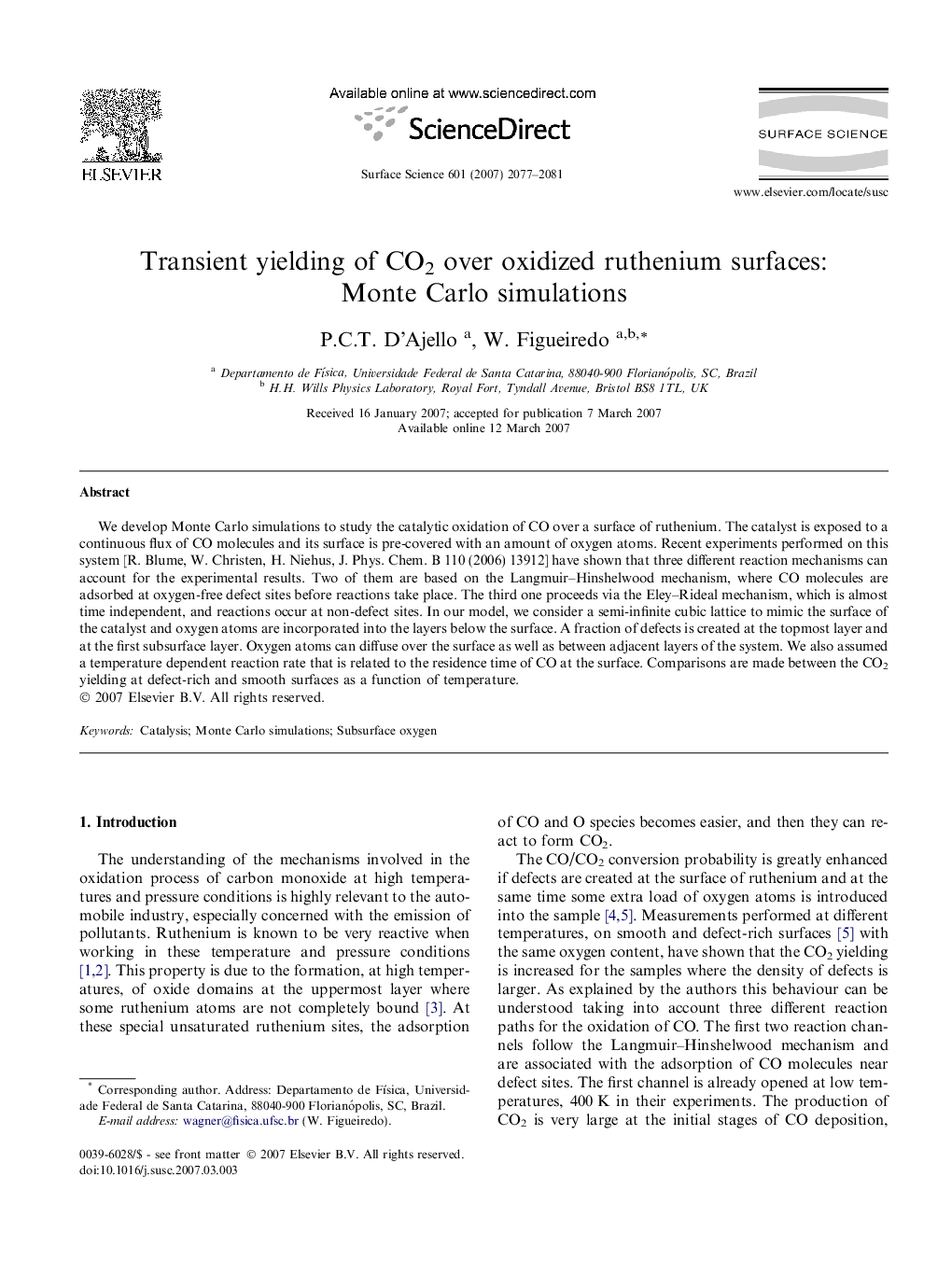| Article ID | Journal | Published Year | Pages | File Type |
|---|---|---|---|---|
| 5425951 | Surface Science | 2007 | 5 Pages |
We develop Monte Carlo simulations to study the catalytic oxidation of CO over a surface of ruthenium. The catalyst is exposed to a continuous flux of CO molecules and its surface is pre-covered with an amount of oxygen atoms. Recent experiments performed on this system [R. Blume, W. Christen, H. Niehus, J. Phys. Chem. B 110 (2006) 13912] have shown that three different reaction mechanisms can account for the experimental results. Two of them are based on the Langmuir-Hinshelwood mechanism, where CO molecules are adsorbed at oxygen-free defect sites before reactions take place. The third one proceeds via the Eley-Rideal mechanism, which is almost time independent, and reactions occur at non-defect sites. In our model, we consider a semi-infinite cubic lattice to mimic the surface of the catalyst and oxygen atoms are incorporated into the layers below the surface. A fraction of defects is created at the topmost layer and at the first subsurface layer. Oxygen atoms can diffuse over the surface as well as between adjacent layers of the system. We also assumed a temperature dependent reaction rate that is related to the residence time of CO at the surface. Comparisons are made between the CO2 yielding at defect-rich and smooth surfaces as a function of temperature.
